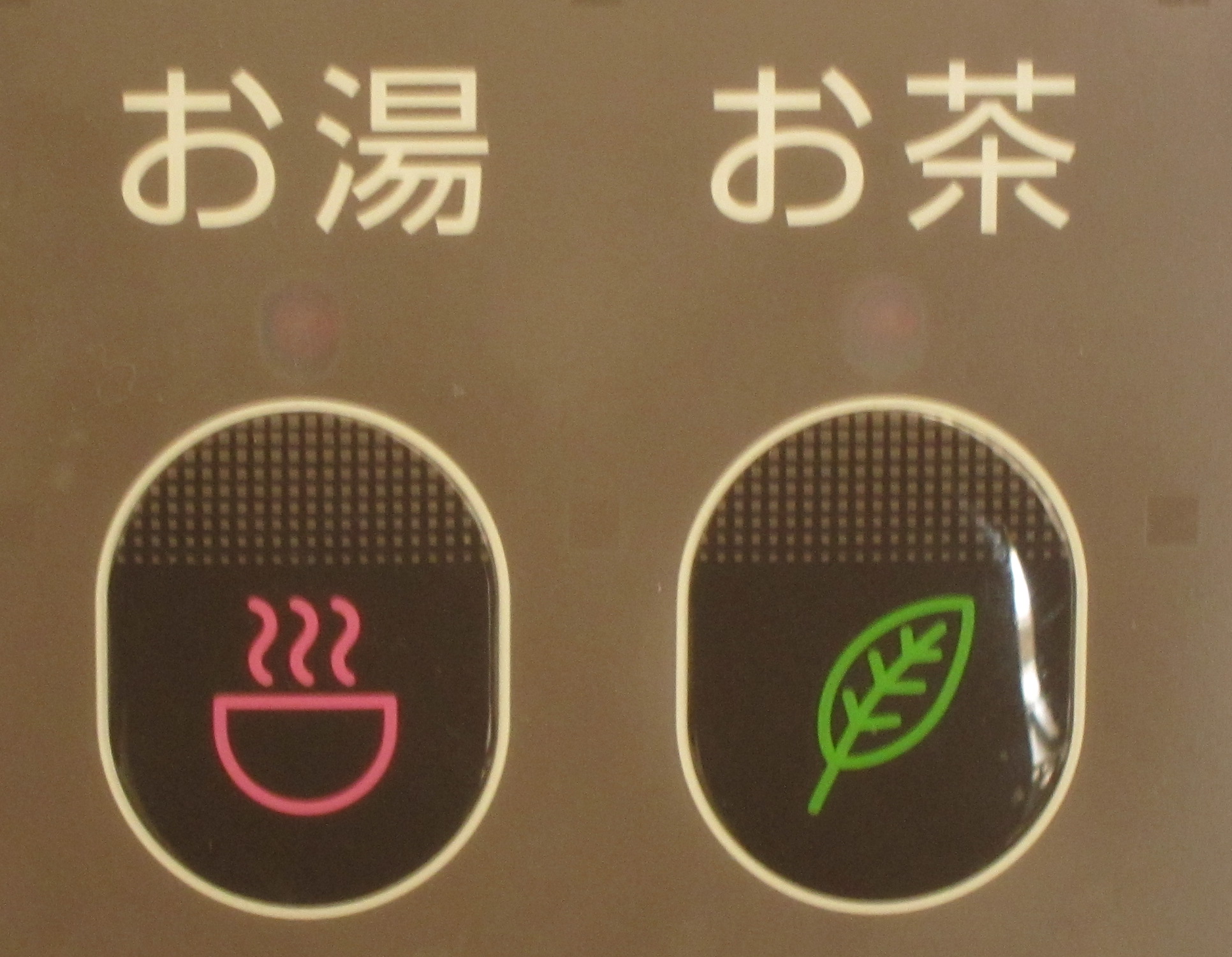|
Nihongo Kentei
The ''Nihongo Kentei'' (日本語検定, ''The Japanese Language Examination'') is a standardized test of Japanese language proficiency for native Japanese language speakers. The test is held twice a year, in June and November; approximately 300,000 people sit the examination every year. In 2011, the test was sponsored by the Japanese Ministry of Education, Culture, Sports, Science, and Technology (MEXT). Overview The ''Nihongo Kentei'' was created to assess overall ability in the Japanese language. The questions focus on more obscure and difficult areas of the Japanese language, such as proficiency in ''Kanji,'' the use of honorifics, and extended vocabulary. Although intended for native speakers, the exam is open to all applicants. It is not to be confused with the Japanese Language Proficiency Test (JLPT), which is intended for non-native Japanese speakers. Features Questions in the ''Nihongo Kentei'' fall into six categories. # 敬語 (Honorifics) # 文法 (Grammar) ... [...More Info...] [...Related Items...] OR: [Wikipedia] [Google] [Baidu] |
Japanese Language
is spoken natively by about 128 million people, primarily by Japanese people and primarily in Japan, the only country where it is the national language. Japanese belongs to the Japonic or Japanese- Ryukyuan language family. There have been many attempts to group the Japonic languages with other families such as the Ainu, Austroasiatic, Koreanic, and the now-discredited Altaic, but none of these proposals has gained widespread acceptance. Little is known of the language's prehistory, or when it first appeared in Japan. Chinese documents from the 3rd century AD recorded a few Japanese words, but substantial Old Japanese texts did not appear until the 8th century. From the Heian period (794–1185), there was a massive influx of Sino-Japanese vocabulary into the language, affecting the phonology of Early Middle Japanese. Late Middle Japanese (1185–1600) saw extensive grammatical changes and the first appearance of European loanwords. The basis of the standard dial ... [...More Info...] [...Related Items...] OR: [Wikipedia] [Google] [Baidu] |
Standardised Test
A standardized test is a test that is administered and scored in a consistent, or "standard", manner. Standardized tests are designed in such a way that the questions and interpretations are consistent and are administered and scored in a predetermined, standard manner. Any test in which the same test is given in the same manner to all test takers, and graded in the same manner for everyone, is a standardized test. Standardized tests do not need to be high-stakes tests, time-limited tests, or multiple-choice tests. A standardized test may be any type of test: a written test, an oral test, or a practical skills performance test. The questions can be simple or complex. The subject matter among school-age students is frequently academic skills, but a standardized test can be given on nearly any topic, including driving tests, creativity, athleticism, personality, professional ethics, or other attributes. The opposite of standardized testing is ''non-standardized testing'', in ... [...More Info...] [...Related Items...] OR: [Wikipedia] [Google] [Baidu] |
Ministry Of Education, Culture, Sports, Science And Technology
The , also known as MEXT or Monka-shō, is one of the eleven Ministries of Japan that composes part of the executive branch of the Government of Japan. Its goal is to improve the development of Japan in relation with the international community. The ministry is responsible for funding research under its jurisdiction, some of which includes: children's health in relation to home environment, delta-sigma modulations utilizing graphs, gender equality in sciences, neutrino detection which contributes to the study of supernovas around the world, and other general research for the future. History The Meiji government created the first Ministry of Education in 1871. In January 2001, the former Ministry of Education, Science, Sports and Culture and the former merged to become the present MEXT. Organization The Ministry of Education, Culture, Sports, Science and Technology currently is led by the Minister of Education, Culture, Sports, Science and Technology. Under that positi ... [...More Info...] [...Related Items...] OR: [Wikipedia] [Google] [Baidu] |
Kanji
are the logographic Chinese characters taken from the Chinese script and used in the writing of Japanese. They were made a major part of the Japanese writing system during the time of Old Japanese and are still used, along with the subsequently-derived syllabic scripts of '' hiragana'' and '' katakana''. The characters have Japanese pronunciations; most have two, with one based on the Chinese sound. A few characters were invented in Japan by constructing character components derived from other Chinese characters. After World War II, Japan made its own efforts to simplify the characters, now known as shinjitai, by a process similar to China's simplification efforts, with the intention to increase literacy among the common folk. Since the 1920s, the Japanese government has published character lists periodically to help direct the education of its citizenry through the myriad Chinese characters that exist. There are nearly 3,000 kanji used in Japanese names and in comm ... [...More Info...] [...Related Items...] OR: [Wikipedia] [Google] [Baidu] |
Honorific Speech In Japanese
The Japanese language has a system of honorific speech, referred to as , parts of speech that show respect. Their use is mandatory in many social situations. Honorifics in Japanese may be used to emphasize social distance or disparity in rank, or to emphasize social intimacy or similarity in rank. Japanese honorific titles, often simply called honorifics, consist of suffixes and prefixes when referring to others in a conversation. The system is very extensive, having its own special vocabulary and grammatical forms to express various levels of respectful, humble, and polite speech. It closely resembles other honorifics systems found in the East Asian cultural sphere, such as honorifics in Korean. Introduction Japanese uses honorific constructions to show or emphasize social rank, social intimacy or similarity in rank. The choice of pronoun used, for example, will express the social relationship between the person speaking and the person being referred to, and Japanese oft ... [...More Info...] [...Related Items...] OR: [Wikipedia] [Google] [Baidu] |
Japanese-Language Proficiency Test
The , or JLPT, is a standardized criterion-referenced test to evaluate and certify Japanese language proficiency for non-native speakers, covering language knowledge, reading ability, and listening ability. The test is held twice a year in Japan and selected countries (on the first Sunday of July and December), and once a year in other regions (on the first Sunday of December). The JLPT consists of five levels. Until 2009, the test had four levels, with 4 being the lowest and 1 being the highest level of certification. JLPT certificates do not expire or become invalid over time. History The JLPT was first held in 1984 in response to the growing demand for standardized Japanese language certification. Initially 7,000 people took the test. Until 2003, the JLPT was one of the requirements for foreigners entering Japanese universities. Since 2003, the Examination for Japanese University Admission for International Students (EJU) is used by most universities for this purpose; unlike ... [...More Info...] [...Related Items...] OR: [Wikipedia] [Google] [Baidu] |
Business Japanese Proficiency Test
The is a Japanese language proficiency test designed to objectively measure a person's practical communicative skills in communicating and responding to information in a Japanese-language business environment. Unlike its counterpart Japanese Language Proficiency Test (JLPT) which focuses more on general Japanese, BJT is not designed for measuring Japanese language knowledge nor business knowledge but instead, BJT is designed to measure a person's practical communicative ability to utilize and respond to given information, ability to express thoughts and opinions, and at the same time promote ideas or projects to people of different backgrounds and expertise. The BJT is not only engineered to measure a person's verbal communicative skills, but also the ability to understand and use Japanese with the aid of text, diagrams, photographs and any other available information in emails or faxes, etc. and at the same time to appropriately perform tasks and workloads suited to a Japanese-l ... [...More Info...] [...Related Items...] OR: [Wikipedia] [Google] [Baidu] |
Hànyǔ Shuǐpíng Kǎoshì
The ''Hanyu Shuiping Kaoshi'' (HSK; ), translated as the Chinese Proficiency Test, is the standardized test of Standard Chinese (a type of Mandarin Chinese) language proficiency of Mainland China for non-native speakers such as foreign students and overseas Chinese. The test is administered by Hanban, an agency of the Ministry of Education of the People's Republic of China. The test cannot be taken in Taiwan, where only the Taiwan's TOCFL exam can be taken. In turn, the TOCFL exam is not available in Mainland China. Background Development of the HSK test began in 1984 at Beijing Language and Culture University, and was officially made a national standardized test in 1992. By 2005, over 120 countries had participated as regular host sites and the tests had been taken around 100 million times ( domestic ethnic minority candidates included). In 2011, Beijing International Chinese College became the first HSK testing center to conduct the HSK test online. The HSK test is ... [...More Info...] [...Related Items...] OR: [Wikipedia] [Google] [Baidu] |
ILR Scale
The Interagency Language Roundtable scale is a set of descriptions of abilities to communicate in a language. It is the standard grading scale for language proficiency in the United States's Federal-level service. It was originally developed by the Interagency Language Roundtable (ILR), which included representation by United States Foreign Service Institute, the predecessor of the National Foreign Affairs Training Center (NFATC). The scale grades people's language proficiency on a scale of 0–5. The designation 0+, 1+, 2+, 3+, or 4+ is assigned when proficiency substantially exceeds one skill level but does not fully meet the criteria for the next level. Thus the scale totals 11 possible grades. Grades may be assigned separately for different skills such as reading, speaking, listening, writing, translation, audio translation, interpretation, and intercultural communication. For some of these skills, the level may be referred to with an abbreviation, for example, S-1 for Speaki ... [...More Info...] [...Related Items...] OR: [Wikipedia] [Google] [Baidu] |
J-Test
The J-Test was introduced in 1991 as a method for the objective measurement of Japanese language proficiency of non-native speakers. Broadly based on the format of a listening test, the exam attempts to gauge practical proficiency in Japanese. Test times The test is held six times a year in January, March, May, July, September and November at sites throughout Japan, People's Republic of China, Republic of China (Taiwan), South Korea, Thailand, Mongolia, Vietnam, Nepal, Indonesia and Philippines. Format J-Test consists of three parts: #Listening Comprehension #Reading Comprehension #Writing section Listening Comprehension In Listening Comprehension the examiners play an audio clip comprising the following sections: #See the picture and listen to the questions and answer them. #Listen to the conversation and answer the question. #Listen to the scene which is played in the audio clip and answer the questions. #The audio file will give a list of words and candidates have to sele ... [...More Info...] [...Related Items...] OR: [Wikipedia] [Google] [Baidu] |
Test Of Proficiency In Korean
The Test of Proficiency in Korean (TOPIK) is a Korean language test for non-native speakers of Korean. The test is offered six times annually (Jan, Apr, May, Jul, Oct, Nov) within Korea and less often to people studying Korean in other countries. The test is for individuals whose first language is not Korean and is taken by overseas ethnic Koreans, those wishing to study at a Korean university, and for those who want to be employed at Korean companies in and outside of Korea. Since 2011, TOPIK is administered by the (국립국제교육원, NIIED), a branch of the Ministry of Education in South Korea. History The test was first administered in 1997 and taken by 2,274 people. Initially the test was held only once a year. In 2009, 180,000 people took the test. The Korean government introduced a law in 2007 that required Chinese workers of Korean descent with no relatives in Korea to attain more than 200 points (out of 400) in the Business TOPIK (B-TOPIK) so they could be entered ... [...More Info...] [...Related Items...] OR: [Wikipedia] [Google] [Baidu] |



